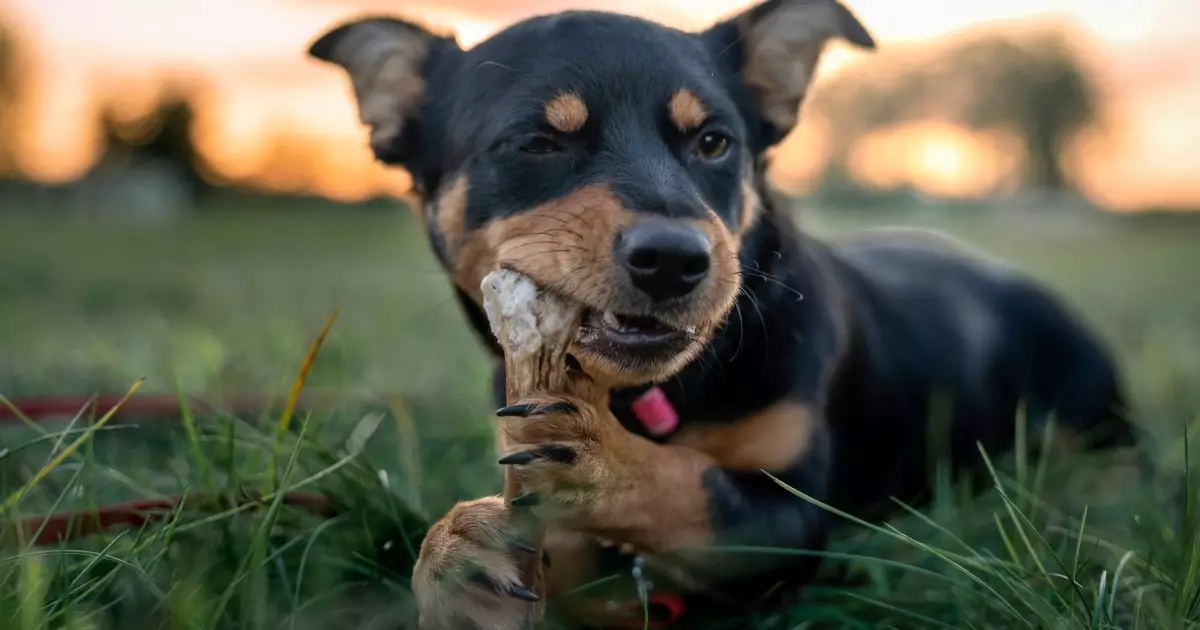Choosing the right bone for your dog can be a daunting task, especially with the swirling sea of misinformation. While bones can offer dental and mental benefits for your furry friend, they can also pose significant health risks depending on the type you choose. It’s crucial to acquire accurate information and make educated decisions to ensure your dog’s safety. The complexities involved range from the potential for broken teeth to severe digestive issues, emphasizing why consulting with a veterinarian is a necessary first step before introducing bones to your dog’s diet.
The Perils of Cooked Bones
One of the cardinal rules when it comes to bone feeding is to avoid cooked bones at all costs. Cooked bones may seem harmless, especially leftovers from your dinner, but they can splinter easily, leading to shattered teeth or dangerous obstructions in the gastrointestinal tract. Reports of dogs suffering severe injuries after indulging in bits and pieces of cooked bones are alarmingly frequent, highlighting the importance of being vigilant and informed. Health complications arising from cooked bones can range from significant mouth injuries to potentially life-threatening conditions that might require surgical intervention.
A Cautionary Note on Commercial Bone Treats
Commercially processed bones frequently fall under the same scrutiny as cooked bones, raising alarms amongst pet owners and experts alike. Products manufactured through smoking or baking often come with preservatives and flavorings that could introduce toxic chemicals into your dog’s system. The FDA has recorded serious health incidents associated with these commercial bone treats, reinforcing the narrative that convenience can come at a cost. Observing your dog while they chew any commercially acquired bone is wise. Monitoring helps to mitigate choking risks and better assess your dog’s comfort and digestion.
The Controversy Surrounding Rawhide Chews
Rawhide chews, made from animal hides, seemingly present a safer option compared to cooked bones and processed treats. However, they carry their set of risks. The method of production often leaves harmful residues, and these chews can harbor harmful bacteria such as Salmonella or E. coli. Moreover, rawhide chews can lead to digestive complications, emphasizing the need for close supervision while your dog chews. If your dog is a vigorous chewer, the risks of choking or blockage increase exponentially with rawhide, necessitating careful consideration.
Raw Bones: A Double-Edged Sword
Raw bones create a unique dichotomy in the discussion about dog nutrition. Vets often pinpoint raw beef or lamb bones as the safer options when compared to their cooked counterparts. They offer essential nutrients, including calcium, and can play a role in promoting dental health. Yet, they are not without their dangers. Risks of splintering exist, especially with raw chicken bones. Furthermore, raw bones can carry bacteria, so the idea of safety hinges on diligent handling, storage, and timing.
Guidelines for Safe Bone Feeding
If you’re considering treating your pooch to a bone, you’ll want to set rules to maximize safety. Initially, never leave your dog unattended while they enjoy a bone, as this could lead to uncontrollable chewing and potential choking. Monitor the integrity of the bone, discarding it once it’s been gnawed down to a size that poses a choking hazard. The impact of dental work on your dog’s ability to chew should also influence your decision-making. Bones can exacerbate existing teeth issues, leading to further complications.
Make it a practice to only offer bones that are appropriately sized for your breed—what’s safe for a small terrier could be deadly for a Great Dane. Cut bones, such as those sliced lengthwise, should be avoided entirely due to their propensity to splinter. Lastly, stick to a ten- to fifteen-minute chewing duration to mitigate risks!
Benefits of Bone Chewing
If approached responsibly, chewing bones can significantly benefit your dog’s health. The act of chewing stimulates saliva production, which is crucial in combating plaque build-up and promoting overall dental hygiene. Chewing can also serve as a natural stress-reliever, helping alleviate anxiety in dogs prone to excessive licking or scratching. Moreover, bones can aid digestion and maintain a healthy gastrointestinal system, offering nutritional benefits in their unbreakable forms while keeping your dog engaged and entertained.
While many veterinarians remain divided on the pros and cons of bone-feeding, most agree that the focus should be on the distinctive needs of your pet. Some dog owners find value in choosing bone powder as an alternative, which delivers essential minerals without the choking hazards and risks linked to actual bone consumption. Engaging in thoughtful discussions with your veterinarian will guide you toward the best choices for your furry friend, ensuring a long and happy life together.

